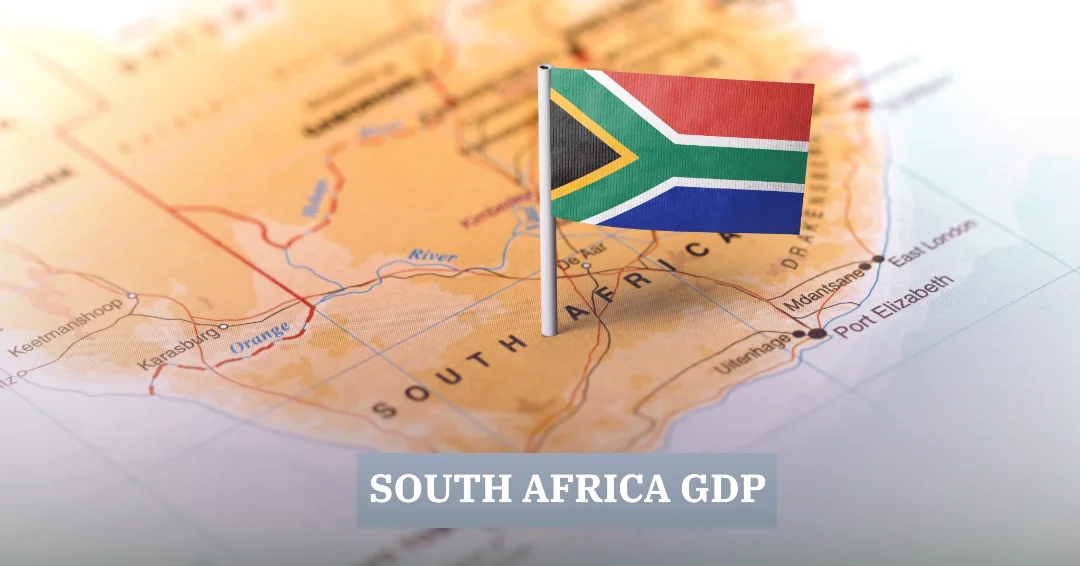For Advertising Contact Us
South Africa GDP – What Is the Overview of the GDP Trends in South Africa?

You may have heard discussions about South Africa’s GDP and wondered about the overall trends and factors affecting the country’s economic performance. Understanding the GDP trends in South Africa can provide valuable insights into the country’s economic health and growth trajectory. In this blog post, we will investigate into the overview of South Africa’s GDP trends, analyzing key factors that contribute to its fluctuations and impact on the nation’s economy.
Historical Perspective of South Africa’s GDP
Pre-Democracy GDP Trends
With South Africa’s history marred by apartheid, the pre-democracy era saw a skewed distribution of wealth and resources. The GDP trends during this time reflected the disparities in economic opportunities and growth, with certain racial groups benefitting significantly more than others.
Post-Apartheid Economic Growth
With the dawn of democracy in South Africa, there was a concerted effort to address the inequalities of the past and promote inclusive economic growth. The post-apartheid era witnessed significant economic reforms aimed at increasing productivity, foreign investment, and job creation to drive sustainable economic growth.
Economic growth in post-apartheid South Africa was initially hampered by challenges such as high unemployment rates, income inequality, and inadequate infrastructure. However, over the years, the country has made strides in improving its economic prospects through various government initiatives and policies aimed at fostering a more inclusive economy for all South Africans.
Recent GDP Trends in South Africa
Impact of the Global Financial Crisis
Some years after the global financial crisis of 2008, South Africa’s economy experienced a sluggish recovery. The country faced challenges in job creation and economic growth as a result of the downturn. The effects of the crisis were prolonged, impacting various sectors and contributing to a slowdown in GDP growth.
Effects of the COVID-19 Pandemic
With the onset of the COVID-19 pandemic, South Africa faced unprecedented challenges that significantly impacted its GDP. The strict lockdown measures implemented to curb the spread of the virus resulted in disruptions to businesses and supply chains, leading to a contraction in economic activities. The pandemic exacerbated existing socioeconomic disparities and posed a threat to the country’s economic recovery.
Trends: The effects of the COVID-19 pandemic have highlighted the vulnerabilities in South Africa’s economy and underscored the importance of implementing sustainable strategies for future growth. As the country navigates through these challenging times, it becomes crucial to assess the impact of external shocks and prioritize initiatives that promote resilience and stability in the long term.
Sectoral Analysis of South Africa’s GDP
The Role of Mining and Industry
After experiencing a decline in recent years, South Africa’s mining and industrial sectors are showing signs of recovery. The mining sector, which has historically played a significant role in the country’s economy, is rebounding with increased commodity prices and improved operational efficiencies. This resurgence is contributing to the overall growth of the GDP, providing a much-needed boost to the economy.
Services and Agriculture: Emerging Trends
With the evolution of the global economy, services and agriculture have emerged as key growth drivers in South Africa. The services sector, including financial services, tourism, and information technology, continues to expand and diversify. At the same time, the agricultural sector is evolving, with a focus on sustainable practices and technological advancements, positioning it as a crucial sector for future economic development.
Analysis: The diversification of South Africa’s economy into services and agriculture reflects a shift towards sustainable growth and resilience. By harnessing the potential of these sectors, the country can reduce its dependence on traditional industries and foster innovation and competitiveness in the global market.
Challenges and Prospects
Economic Challenges Facing South Africa
Any discussion of South Africa’s GDP trends would be remiss without acknowledging the economic challenges the country faces. High unemployment rates, income inequality, political instability, and a struggling education system are just some of the issues that contribute to the hurdles in achieving sustainable economic growth.
Future Projections and Growth Opportunities
On the other hand, there are significant growth opportunities and prospects for South Africa’s economy. The country boasts a wealth of natural resources, a strong agricultural sector, and a growing technology industry. Moreover, with the right policies and investments in infrastructure, education, and innovation, South Africa has the potential to attract more foreign direct investment and stimulate economic growth.
Understanding the challenges and opportunities facing South Africa’s economy is crucial for policymakers, investors, and business leaders alike. By addressing the economic challenges and capitalizing on growth prospects, South Africa can set itself on a path towards sustainable development and prosperity for its people.
Final Words
Following this detailed analysis of the GDP trends in South Africa, it is evident that the country has faced challenges in recent years, resulting in fluctuating economic growth. Factors such as political instability, high unemployment rates, and the impact of the COVID-19 pandemic have contributed to this volatility. Despite these challenges, there are opportunities for growth and development in key sectors such as mining, manufacturing, and tourism. It is imperative for the government and businesses to work together towards implementing strategic policies and investments that will drive sustainable economic growth and improve the living standards of all South Africans. By closely monitoring and responding to the changing economic landscape, South Africa can navigate these challenges and build a more resilient and prosperous economy for the future.



